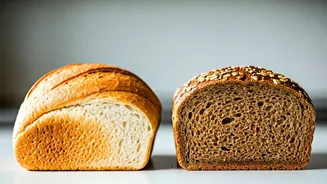Embrace Leafy Greens
Leafy green vegetables are packed with vital nutrients and low in carbohydrates, making them ideal for diabetes management. Consider incorporating spinach,
kale, and collard greens into your diet. These greens provide essential vitamins, minerals, and antioxidants while having a minimal impact on blood sugar levels. They are rich in fiber, which aids in slowing down the absorption of sugar, preventing spikes. Additionally, these vegetables are versatile; they can be added to salads, smoothies, or cooked as a side dish. Regularly including leafy greens in your diet provides various health benefits, including improved insulin sensitivity and reduced risk of complications associated with diabetes. This dietary choice offers a simple, natural method to actively support your diabetes management plan and enhance your overall health.
Choose Fatty Fish
Fatty fish, such as salmon, mackerel, and sardines, are excellent sources of omega-3 fatty acids, crucial for overall health and diabetes management. Omega-3s can reduce inflammation, a significant factor in insulin resistance. Consuming these fish can help lower the risk of heart disease, a common complication of diabetes. They are also packed with protein, which helps keep you feeling full and satisfied, aiding in weight management – a critical aspect of controlling blood sugar levels. Aim to eat fatty fish at least twice a week to reap these benefits. Baking, grilling, or steaming these fish are the healthiest cooking methods. By incorporating fatty fish, you are not only taking care of your blood sugar but also promoting heart health and reducing the risk of inflammation, all crucial for a comprehensive diabetes management strategy.
Select Whole Grains
Whole grains are a superior choice compared to refined grains for people with diabetes. Unlike white bread or white rice, whole grains retain their bran, germ, and endosperm, providing fiber and nutrients that help manage blood sugar levels. Fiber slows down the digestion and absorption of glucose, preventing rapid spikes. Options like brown rice, quinoa, and oats can be included in meals. They offer a sustained release of energy, which is better for blood sugar control compared to the quick rise from refined carbs. They also provide essential vitamins and minerals. The added fiber aids in digestion and helps in maintaining a healthy weight. Making the switch to whole grains is a simple dietary change with significant health benefits, helping to manage blood sugar, improving insulin sensitivity, and supporting overall health.
Incorporate Nuts and Seeds
Nuts and seeds are excellent sources of healthy fats, fiber, and protein, making them beneficial for blood sugar control and weight management. These foods have a low glycemic index, meaning they don't cause rapid blood sugar spikes. Walnuts, almonds, chia seeds, and flaxseeds are great choices. These foods help in slowing down glucose absorption, which is critical for diabetes management. The fiber content supports digestive health, and the healthy fats contribute to a feeling of fullness, which can assist in controlling portion sizes and weight. Nuts and seeds can be added to your diet as snacks or sprinkled over meals. However, portion control is essential, as they are calorie-dense. Including these foods in your daily meals is a simple way to improve insulin sensitivity and support overall health.
Focus on Berries
Berries like blueberries, strawberries, and raspberries are packed with antioxidants and fiber and have a low glycemic index, making them a suitable choice for diabetics. The fiber content helps slow down sugar absorption, which prevents spikes in blood sugar. These fruits also contain antioxidants that can help protect against cell damage and reduce inflammation. Berries offer a natural sweetness without causing significant blood sugar fluctuations. They can be enjoyed fresh, added to yogurt, or incorporated into smoothies. Including berries in your daily diet can improve insulin sensitivity and reduce the risk of diabetes complications. These tasty and nutritious fruits offer a simple, delicious way to support blood sugar management and improve overall well-being.
Add Plain Yogurt
Plain yogurt, especially Greek yogurt, is a good source of protein and probiotics, contributing to healthy blood sugar levels and gut health. Protein helps slow the digestion of carbohydrates, leading to a more gradual rise in blood sugar. Probiotics can improve insulin sensitivity and reduce inflammation. Opt for plain, unsweetened yogurt, as flavored yogurts often contain added sugars that can impact blood sugar control. You can add berries, nuts, or seeds for flavor and added nutritional value. Including yogurt in your diet supports overall digestive health, controls blood sugar levels, and offers a versatile and filling food option. This simple dietary adjustment is a step towards better diabetes management and improved well-being.
Choose Healthy Fats
Healthy fats, like those found in avocados and olive oil, are vital for managing diabetes because they help improve insulin sensitivity and support heart health. These fats do not significantly affect blood sugar levels, and they help reduce inflammation. They play a role in slowing down carbohydrate absorption, which prevents blood sugar spikes. Avocados and olive oil can be added to your meals, such as in salads or used for cooking. They provide essential nutrients and help in maintaining a feeling of fullness, which is beneficial for weight management, a key factor in controlling diabetes. When preparing your meals, incorporate these healthy fats to support your blood sugar management plan and promote overall cardiovascular health, which is particularly important for individuals with diabetes.













